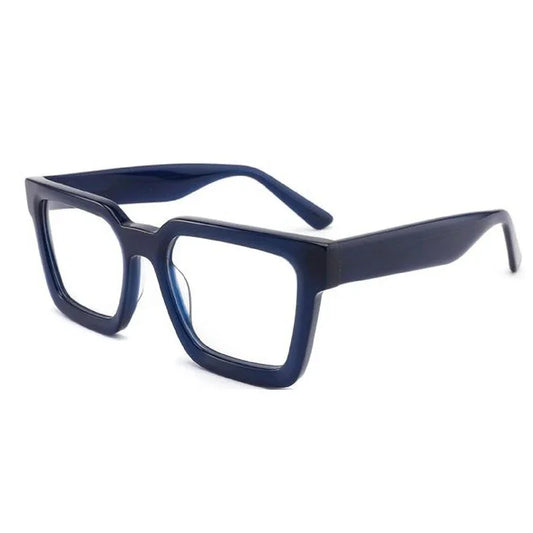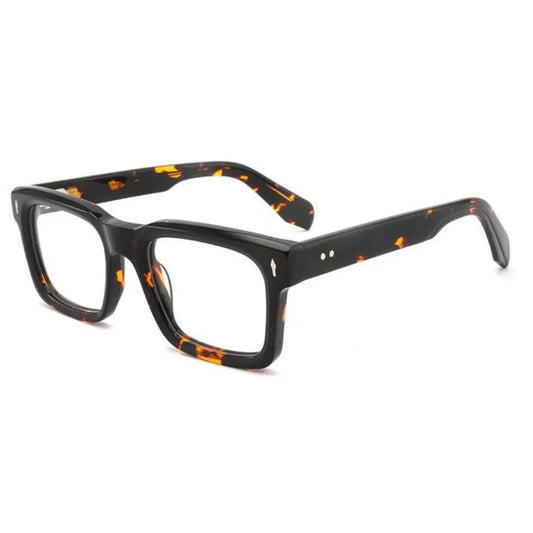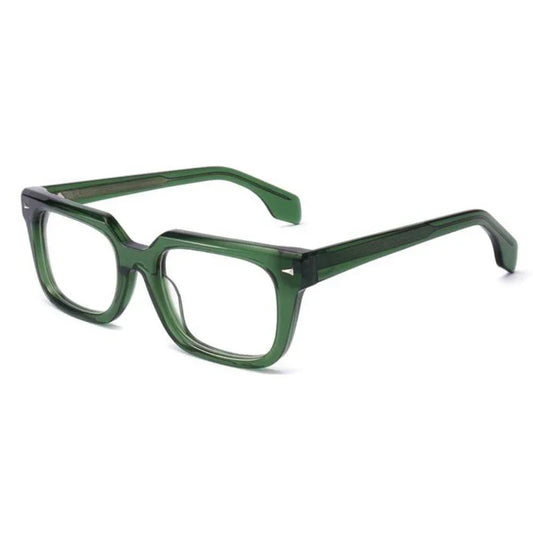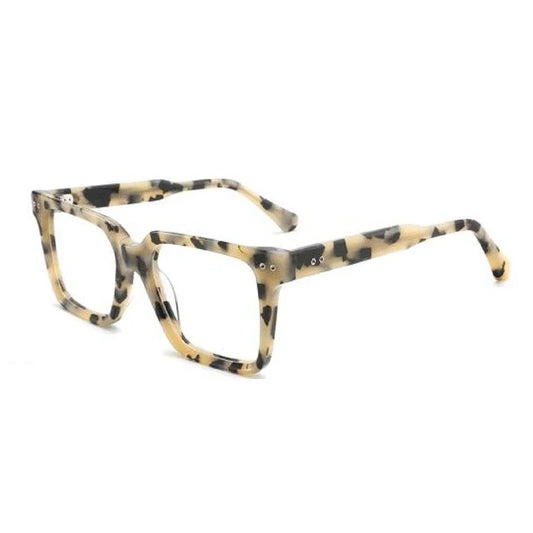
Complete Guide to Reading Glasses Size Selection
Over 60% of adults report discomfort or poor fit from their first pair of reading glasses. The size of your frames is more than a cosmetic detail, it directly affects how comfortably and clearly you see every day. Unpacking the meaning behind reading glasses sizes helps you dodge common mistakes and ensures you enjoy lasting comfort and better vision with every wear.
Table of Contents
- What Reading Glasses Sizes Mean
- Key Frame Measurements And Their Impact
- How To Choose The Right Glasses Fit
- Comparing Frame Styles And Face Shapes
- Common Sizing Mistakes To Avoid
Key Takeaways
| Point | Details |
|---|---|
| Understanding Measurements | Lens width and bridge width are key to achieving comfort and optimal vision with reading glasses. |
| Frame Fit and Comfort | Ensure glasses fit well without slipping or creating pressure; individual facial structures affect the right choice. |
| Facial Structure Compatibility | Different frame styles should complement individual face shapes for enhanced comfort and aesthetics. |
| Avoid Sizing Mistakes | Be wary of oversized or undersized frames; always measure and test glasses for comfort before purchase. |
What Reading Glasses Sizes Mean
Reading glasses sizes involve more than just a simple number – they represent a precise measurement system that determines how well your eyewear will fit and function. Understanding these sizes is crucial for selecting glasses that provide optimal visual comfort and clarity.
Typically, reading glasses sizes comprise two primary measurements: lens width and bridge width. The lens width represents the horizontal diameter of each lens, usually ranging between 40mm to 62mm. This measurement determines how much of your visual field will be covered and how proportional the glasses will look on your face. The bridge width, measuring the distance between lens frames, ensures the glasses sit comfortably across your nose without slipping or creating pressure points.
To help you find the perfect fit, most reading glasses follow a standardised sizing chart that breaks down measurements into small (48-50mm), medium (52-54mm), and large (56-58mm) categories.
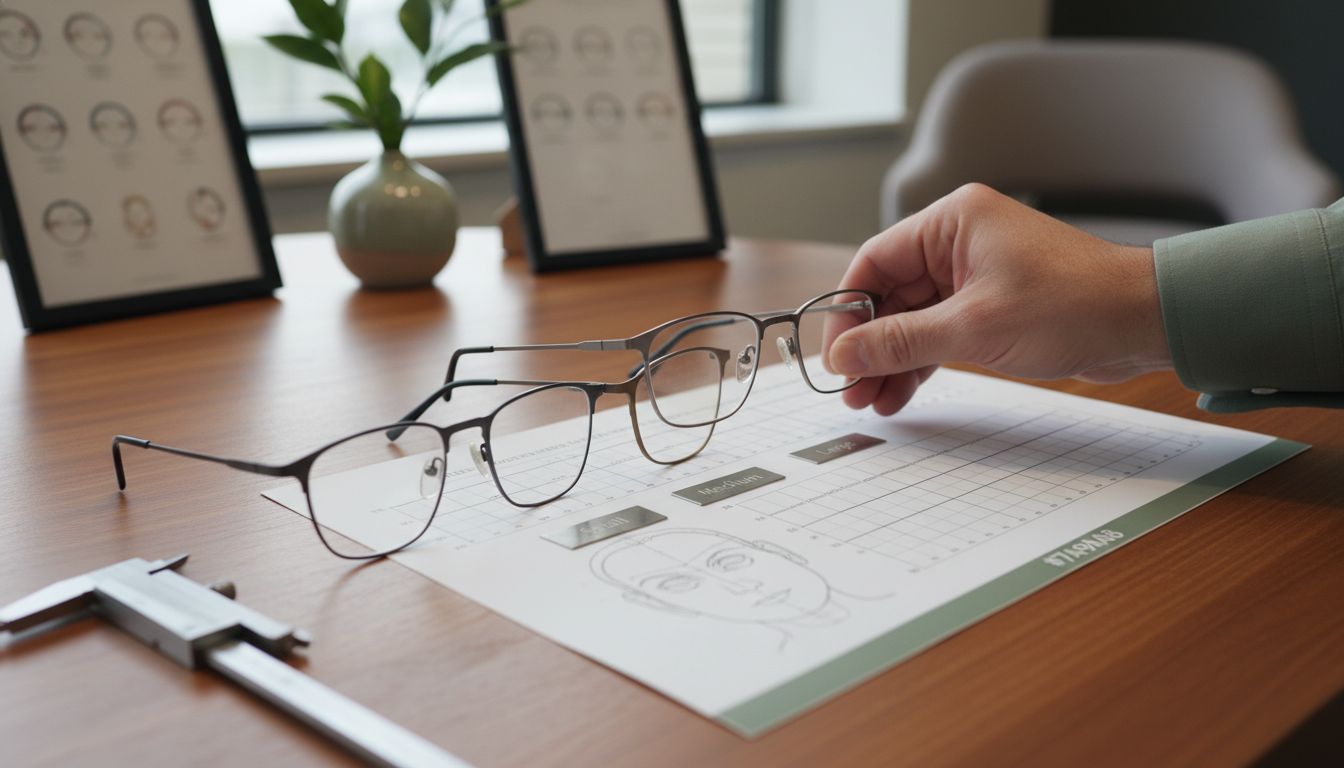 These categories help match frame dimensions to different facial structures. Understanding the Reading Glasses Fit Guide for Better Vision can provide additional insights into selecting the right size for your specific needs.
These categories help match frame dimensions to different facial structures. Understanding the Reading Glasses Fit Guide for Better Vision can provide additional insights into selecting the right size for your specific needs.
When shopping for reading glasses, pay attention to how the frames sit on your face. A well-fitted pair should rest comfortably without sliding down your nose or creating pressure behind your ears. Consider trying different sizes and styles to find the most comfortable and aesthetically pleasing option that complements your facial features and personal style.
Key Frame Measurements and Their Impact
Understanding frame measurements goes far beyond simple numbers – these precise dimensions directly influence your reading glasses’ comfort, functionality, and overall visual experience. Each measurement plays a critical role in determining how well your glasses will perform and feel throughout daily use.
Here’s a concise summary of key reading glasses frame measurements and their impact:
| Measurement | Typical Range | Role in Fit & Comfort |
|---|---|---|
| Temple Length | 130mm - 145mm | Ear comfort Glasses stability |
| Lens Width | 40mm - 62mm | Visual field Frame proportion |
| Bridge Width | 14mm - 24mm | Weight distribution Nose comfort |
The primary frame measurements include temple length, lens width, and bridge width, each contributing uniquely to your glasses’ fit and performance. Temple length, typically ranging from 130mm to 145mm, determines how securely the glasses sit on your ears and prevent slipping.
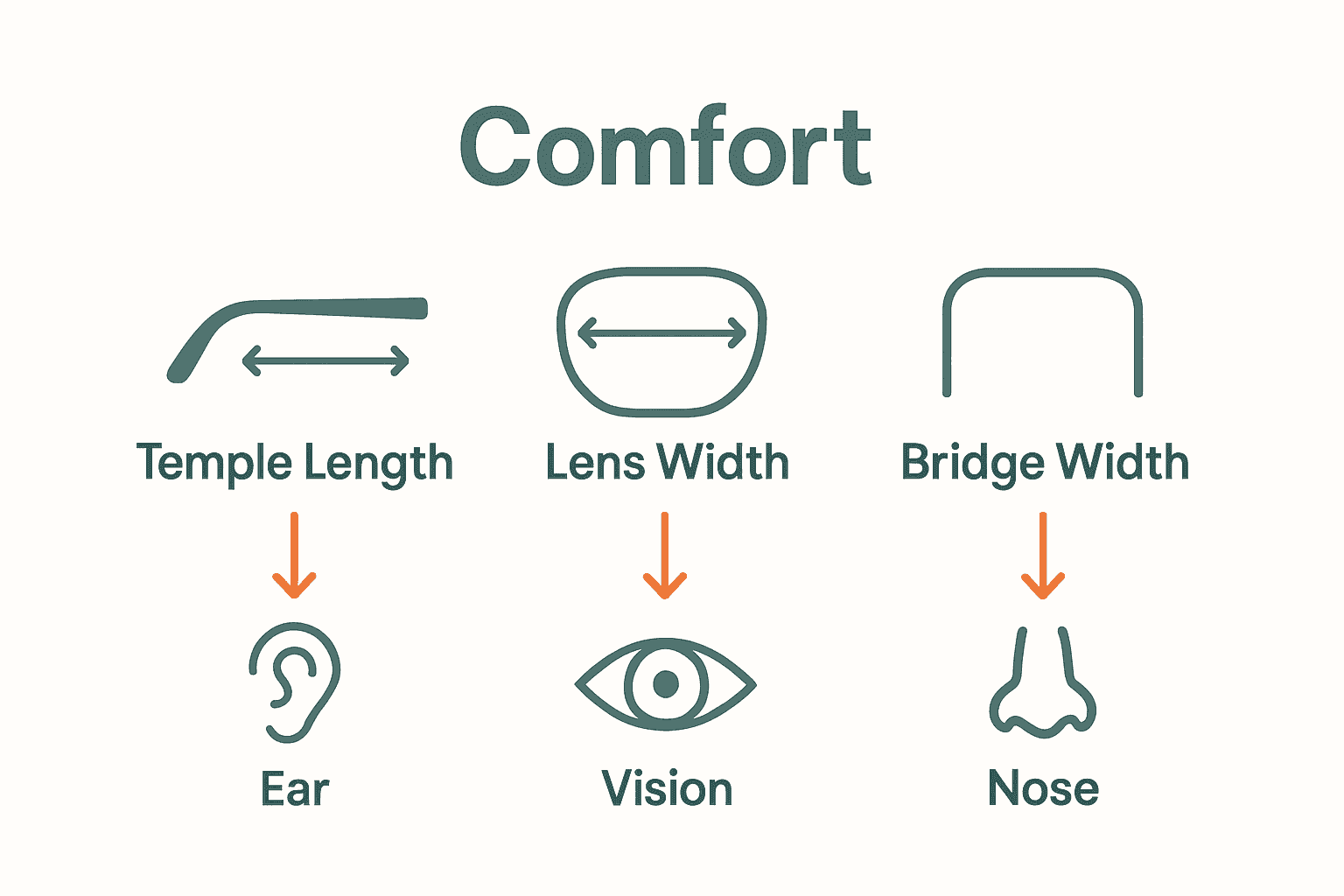 Lens width impacts your visual field and aesthetic proportions, while bridge width ensures proper weight distribution and nose comfort. Understanding the Types of Reading Glasses for Better Vision can provide deeper insights into these nuanced measurements.
Lens width impacts your visual field and aesthetic proportions, while bridge width ensures proper weight distribution and nose comfort. Understanding the Types of Reading Glasses for Better Vision can provide deeper insights into these nuanced measurements.
To help you navigate frame measurements effectively, consider these key considerations:
- Temple Length: Determines ear comfort and glasses stability
- Lens Width: Controls visual coverage and frame proportions
- Bridge Width: Manages weight distribution and nose comfort
- Frame Material: Influences overall weight and flexibility
When selecting reading glasses, remember that individual facial structures vary significantly. What works perfectly for one person might feel uncomfortable for another. Experimenting with different frame measurements and styles will help you find the ideal combination that provides both visual clarity and wearing comfort. Pay attention to how the glasses feel, not just how they look, to ensure you’re making the most informed choice for your unique needs.
How to Choose the Right Glasses Fit
Choosing the right glasses fit is an art form that balances comfort, functionality, and personal style. Your reading glasses should feel like a natural extension of yourself, providing clear vision without causing discomfort or constant adjustment.
Start by understanding your facial structure and measuring key dimensions. Face width, nose bridge height, and ear placement are critical factors in finding glasses that sit perfectly. Some faces work best with wider frames, while others look more balanced with narrower designs. Understanding Reading Glasses Frame Styles for Your Needs can help you navigate these nuanced selection criteria.
Consider these essential fit-checking techniques:
- Ensure the frames sit level and don’t slide down your nose
- Check that temple arms extend straight back without pressing or bending
- Verify the lens width covers your entire reading zone without excess overhang
- Test comfort by wearing the glasses for 10-15 minutes to assess potential pressure points
Remember that sizing isn’t just about measurements – it’s about finding glasses that make you feel confident and comfortable. Different frame styles suit different face shapes, so don’t hesitate to try multiple options. Your perfect reading glasses should feel so natural that you forget you’re wearing them, providing clear vision without constant readjustment or discomfort.
Comparing Frame Styles and Face Shapes
Matching reading glasses to your unique facial structure is more than a fashion choice – it’s about finding a harmonious blend of comfort, functionality, and personal expression. Understanding how different frame styles complement various face shapes can transform your eyewear from a mere visual aid to a stylish accessory that enhances your natural features.
Face shapes typically fall into five primary categories: round, oval, square, heart-shaped, and diamond. Each shape has distinctive characteristics that pair best with specific frame styles. Round faces benefit from angular frames that add definition, while square faces look best with softer, rounded frames that soften strong jawlines. Oval faces are considered the most versatile, able to pull off almost any frame style with ease. Guide to Glasses Frame Styles offers additional insights into navigating these nuanced style selections.
Consider these frame style recommendations based on face shape:
- Round Faces: Choose rectangular or square frames to create visual angles
- Square Faces: Opt for round or oval frames to soften strong facial lines
- Oval Faces: Experiment with diverse frame shapes and sizes
- Heart-Shaped Faces: Select frames wider at the top to balance facial proportions
- Diamond Faces: Choose frames that highlight cheekbones and soften angular features
Remember that while these guidelines provide excellent starting points, personal comfort and individual style should always be your ultimate deciding factors. The most important aspect of selecting reading glasses is finding a pair that makes you feel confident and allows you to see clearly and comfortably.
Common Sizing Mistakes to Avoid
Choosing the wrong size reading glasses can transform what should be a simple vision solution into a frustrating experience. Many people unknowingly make critical sizing errors that compromise both comfort and visual effectiveness, turning what should be a helpful accessory into a source of constant irritation.
Oversized frames and undersized frames are two of the most common sizing pitfalls that can dramatically impact your reading glasses’ performance. Oversized frames tend to slip constantly, creating visual distraction and potential neck strain from repeated repositioning. Conversely, frames that are too small create uncomfortable pressure points, pinch your nose, and restrict your natural visual field. 7 Best Reading Glasses for Ladies and How to Choose offers additional insights into navigating these sizing challenges.
Avoid these critical sizing mistakes:
- Ignoring temple arm length when selecting frames
- Choosing frames based solely on aesthetic appeal
- Neglecting to measure your current pupillary distance
- Assuming one-size-fits-all reading glasses work for everyone
- Purchasing glasses without trying them on or testing comfort
Remember that proper sizing is a holistic process involving multiple measurements and personal comfort assessments. What works perfectly for one person might be uncomfortable for another. Take time to try multiple sizes, move around while wearing the glasses, and pay attention to how they feel during different activities. Your reading glasses should feel like a natural extension of yourself – comfortable, functional, and almost unnoticeable during use.
Find Your Perfect Fit with Ministry of Sight Reading Glasses
Struggling to find reading glasses that truly fit your unique face shape and size? The Complete Guide to Reading Glasses Size Selection highlights key challenges like choosing the right lens width, temple length, and bridge width to avoid discomfort and slipping. Don’t settle for glasses that create pressure points or constantly slide down your nose. Ministry of Sight offers a wide range of frames perfectly sized for your needs including stylish options in Rectangular Reading Glasses and Round Reading Glasses.
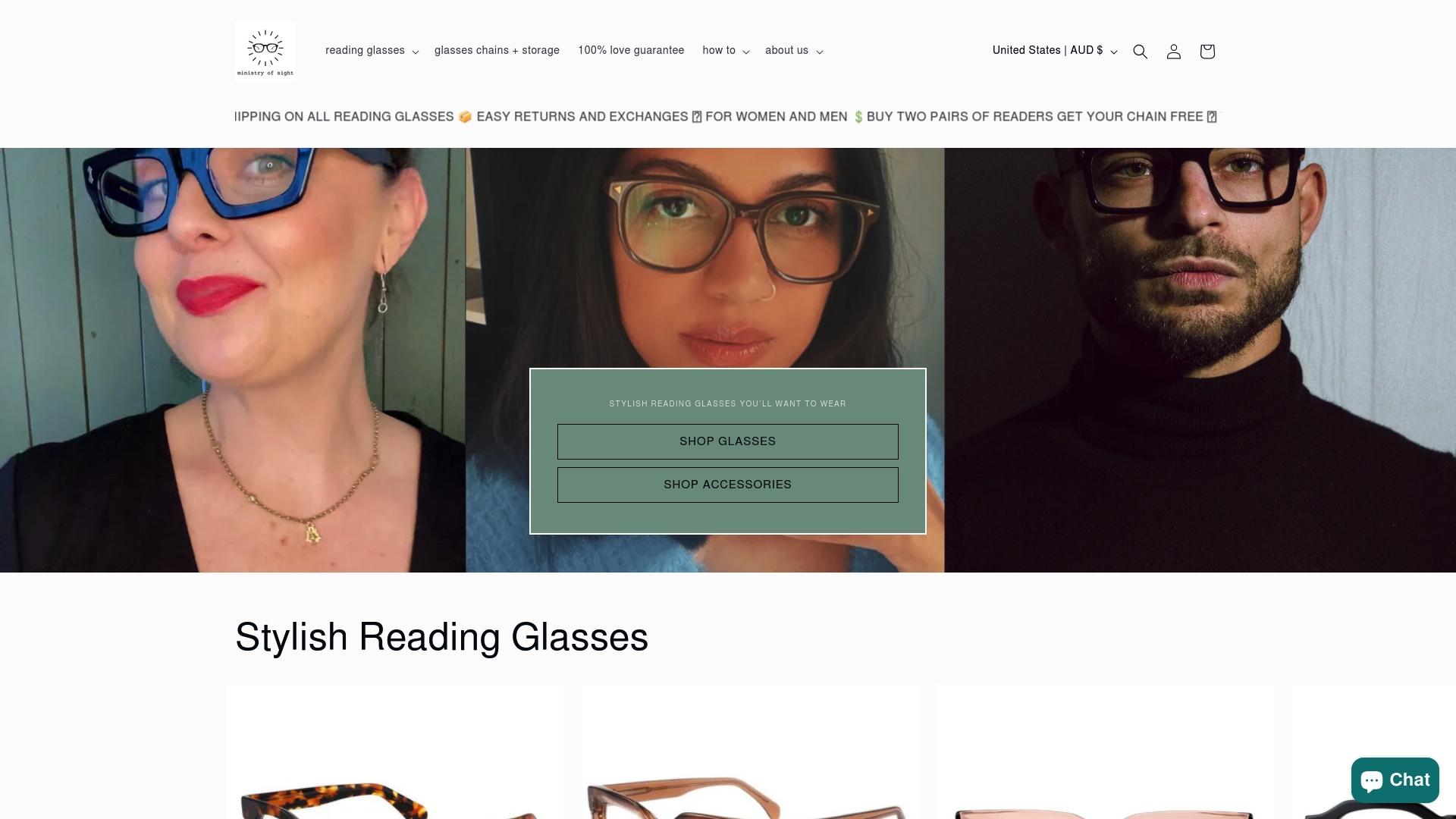
Take control of your vision comfort today by exploring our curated collections designed with your measurements in mind. With free shipping across Australia and exclusive buy-one-get-one offers, there has never been a better time to invest in properly fitting reading glasses. Visit Ministry of Sight now and start your journey to clearer vision and all-day comfort.
Frequently Asked Questions
What do the different sizes of reading glasses mean?
The sizes of reading glasses typically refer to measurements such as lens width and bridge width, which impact how well the glasses fit and function. Lens width usually ranges from 40mm to 62mm, while bridge width can be between 14mm to 24mm. These measurements are crucial for ensuring visual comfort and clarity.
How do I choose the right reading glasses for my face shape?
Selecting the right reading glasses involves matching frame styles to your facial structure. For example, round faces look good with angular frames, while square faces prefer softer, rounded styles. Understanding your face shape can help you find a harmonious blend of comfort and style in your reading glasses.
What should I consider when selecting the right frame measurements?
When choosing frame measurements, consider temple length, lens width, and bridge width. Temple length affects stability and comfort; lens width impacts your visual field and aesthetic proportions; and bridge width ensures proper weight distribution on your nose to avoid discomfort when wearing the glasses.
What common mistakes should I avoid when buying reading glasses?
Common mistakes when selecting reading glasses include choosing frames solely based on appearance, neglecting to measure your pupillary distance, and ignoring the length of temple arms. To ensure a proper fit, always try on glasses and pay attention to comfort during use.


